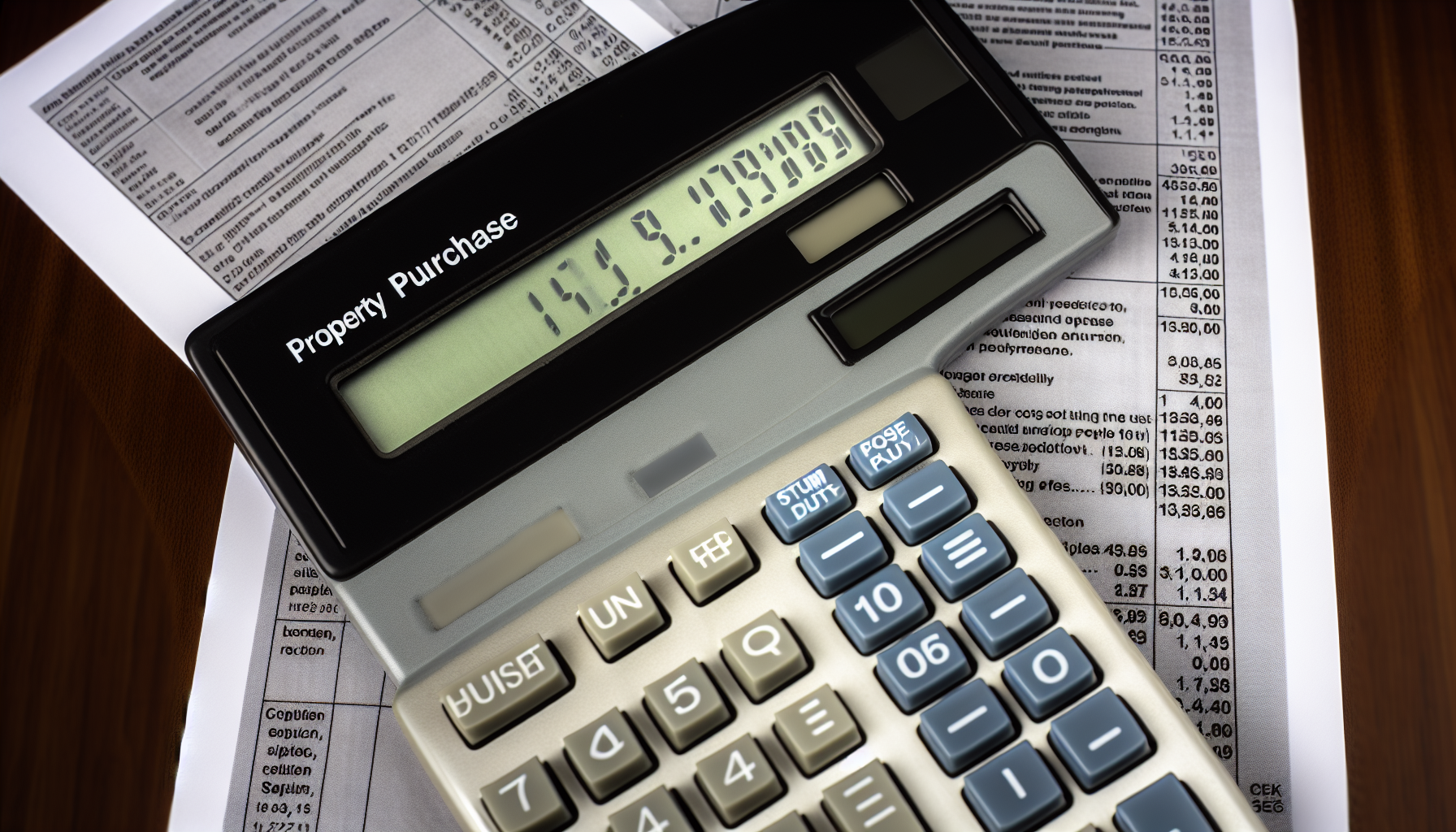Setting out to buy your first home? A clear financial plan is your roadmap to success. This guide cuts through the complexity, equipping first home buyers with key strategies for grants, loans, savings, and more. With a focus on financial planning for first home buyers, we ensure no detail is overlooked in your journey to homeownership.
Key Takeaways
- The First Home Owner Grant (FHOG) in Western Australia aids eligible first-time buyers with a $10,000 payment and comes with specific criteria, including a residency requirement and property value caps.
- Crafting a savings plan for a home deposit is crucial, with a 20% target of the property’s value recommended to avoid Lenders Mortgage Insurance, and automating savings can significantly help in achieving this goal.
- Understanding loan options, comparing lender offers, considering mortgage insurance premiums, and budgeting for various additional property purchase costs, such as stamp duty and inspection fees, are key financial planning steps for home buyers.
Understanding the First Home Owner Grant (FHOG) in Western Australia

The home owner grant in Western Australia, also known as the first home owner grant (FHOG), offers a substantial benefit to those entering the housing market for the first time. It provides a one-time payment of $10,000 and is specifically tailored for eligible first home buyers who are purchasing or building new homes. This initiative ensures broader reach by setting property value limits: up to $750,000 for homes located south of the 26th parallel and up to $1 million north of that line.
By alleviating some financial burden with this grant, home ownership becomes more feasible for first home buyers. The FHOG not only helps reduce upfront costs but also allows these individuals to access additional government incentives aimed at assisting them on their journey toward owning their very own new residence—thus making an often overwhelming process considerably more manageable.
Eligibility Criteria for FHOG
The First Home Owner Grant (FHOG) stipulates certain qualifying conditions. Applicants must submit a completed application. Be 18 years of age or older, but exemptions for individuals younger than 18 can sometimes be made under special circumstances. It is necessary that at least one applicant holds the status of an Australian citizen or a permanent resident to qualify.
A vital criterion is the obligation for applicants to occupy their purchased established home as their primary place of residence consecutively for six months within the first twelve months after taking ownership, or from when construction is complete if the house is being built new. It’s also important to note that neither you nor your spouse may have previously owned residential property prior to July 1, 2000, and neither should have been beneficiaries of a grant under the First Home Owner Grant Act 2000 in any state or territory across Australia.
Applying for the FHOG
After determining your qualification for the FHOG, you should proceed to submit an application through one of these methods:
- Utilizing the online FHOG Application Portal
- Engaging with an authorized agent lender who will file it for you
- Sending or handing in a physical application form to RevenueWA
It is critically important to ensure that the submission of your FHOG application takes place within 12 months following the finalization of your transaction. To avoid any mistakes regarding payments, double-check that all bank account details provided are correct. Consulting with a Mortgage Choice broker or equivalent experts is advisable throughout this procedure.
Crafting a Savings Plan for Your Home Deposit

Crafting a robust savings plan is essential for your home deposit, and it’s important to understand how much to save. Financial experts often advise setting aside 5-20% of the property’s value, aiming for an optimal 20%. This level of savings not only lays down a strong financial base but also makes you more attractive to lenders.
To accumulate funds swiftly for your home deposit, having an organized savings strategy is key. Strategies such as employing special saving accounts that offer high interest or fixed-term deposits can boost the growth of your savings while curbing frivolous expenditures. By scrutinizing current spending habits, one can identify potential cost-cutting areas which contribute to an enhanced saving regimen.
Setting Realistic Savings Goals
Establishing attainable objectives is fundamental to an effective savings strategy, particularly when it comes to accumulating funds for a home deposit. Aiming to save 20% of the property’s purchase price is commonly recommended. For example, in Perth, Western Australia, this would mean setting aside approximately $117,600 for a home with a median value of $588,000. This level of savings can circumvent the requirement for Lenders Mortgage Insurance (LMI).
To set these goals properly requires an assessment of your capacity to borrow money which will vary based on personal financial factors including income levels and credit history among others. Utilizing instruments such as the Home Saver Calculator can project how long it will take you to amass enough funds for your house deposit considering your current rate of saving and the price range you are targeting with real estate purchases in mind—this aids prospective buyers in determining whether their path toward homeownership remains realistic or if adjustments need to be made within their existing approach towards saving.
Automating Savings Contributions
Establishing automatic transfers to a savings account immediately upon receiving your paycheck can greatly enhance the effectiveness of your saving endeavors. It ensures that you save on a regular basis without the necessity to perform manual fund transfers with each payday.
Adopting this technique allows for an increase in your savings balance with minimal active oversight, effectively diminishing the impulse to divert funds towards other expenditures. Soliciting direct deposit from an employer into a savings account constitutes yet another efficient approach to automating the accumulation of funds intended for something like a house down payment.
Navigating Loan Options and Interest Rates

Grasping the intricacies of loan options and interest rates is essential in your quest to purchase a home. Specific types of loans are tailored for distinct purposes, including construction loans aimed at building new homes, interest-only loans that offer reduced payments initially, or bridging loans crafted for those moving from one property to another.
Making an informed decision between variable rate loans—whose repayments can change with market conditions—and fixed-rate loans that ensure steady repayment figures is crucial for effective financial management. A deep understanding of these choices is imperative to selecting the option that best aligns with your unique situation.
Comparing Lender Offers
When seeking a home loan, it’s crucial to examine offers from different lenders thoroughly. Engaging with numerous financial institutions may uncover tailored loan options that could result in significant savings through reduced interest rates.
For an effective comparison of home loans, evaluate the fees, features, and particularly the interest rate of each offering. Employing the comparison rate is essential for grasping a loan’s actual expense. Enlisting the services of a mortgage broker can greatly aid this endeavor by assisting you in securing a loan that aligns perfectly with your economic needs.
Understanding Mortgage Insurance Premiums
In the process of purchasing a home, it is crucial to take into account the costs associated with mortgage insurance premiums. Mortgage insurance, specifically required when you make a deposit that is less than 20% of your property’s value, serves as protection for lenders if the borrower fails to repay.
When it comes to determining whether lender’s mortgage insurance (LMI) will be applied, this occurs once the Loan to Value Ratio (LVR) exceeds 80%, indicating that your deposit does not meet or exceed 20%. The LMI fee can average about $6,200 and varies depending on factors such as LVR and property value. To how much has been put down by borrowers initially? These factors contribute significantly towards increasing loan expenses. It’s critical for potential homeowners to fully understand how these charges function so they are able to make informed financial choices during their home purchase.
Budgeting for Additional Property Purchase Costs

When you’re in the market to purchase a property, as a home buyer, it’s crucial to look beyond the initial sale price. Be sure to account for additional expenses such as:
- Stamp duty
- Inspection and valuation fees
- Legal costs associated with purchasing
- Costs incurred from moving
- The necessity of obtaining home insurance
It is vital that you incorporate these escalating expenses into your preliminary budget planning.
Ensure you have funds allocated for any immediate renovations required post-purchase along with upfront utility service costs. Obtaining home insurance promptly can safeguard against significant repair outlays down the road. Don’t overlook recurring expenditures which will include council rates, ongoing premiums for your home insurance policy, and regular mortgage repayments.
Estimating Stamp Duty and Other Government Charges
When purchasing a property, home buyers must account for the additional expense of stamp duty. In Western Australia, this transfer duty is computed on an incremental scale and commences at a concessional rate for properties priced below $200,000. For instance, if you’re buying a property worth $500,000 in this region, expect to pay stamp duty costs amounting to $17,765.
First-time purchasers are eligible for specific concessions when it comes to stamp duty—these apply when acquiring properties with values not exceeding $430,000 or vacant land valued under $300,000. Even above these prices, there are gradated concession rates available. To ascertain the exact amount of duty payable on a prospective purchase, one can make use of the Transfer Duty Calculator provided by the Department of Finance—an invaluable resource that simplifies the calculation of potential tax liabilities associated with property transfers.
Planning for Inspection and Valuation Fees
Budgeting for a property purchase should include allocations for inspection and valuation fees. Such expenses are necessary to cover assessments of the property’s structural state through building inspections, and pest inspections that identify potentially harmful infestations. Conducting these checks is vital to ascertain both the condition and value of the real estate.
Setting aside approximately $350 for joint building and pest examinations constitutes an essential part of savvy financial strategizing. By taking advantage of the cooling-off period, prospective buyers can carry out these evaluations, which may reveal repair needs affecting budget planning and subsequent monetary choices.
The Settlement Process and Financial Considerations
Finalizing your property purchase culminates with the settlement process. This crucial step legally and officially transfers ownership from the seller to you, signifying a new chapter in your life.
During the settlement process, various critical steps must be taken.
- Reviewing and approving all required documentation
- Concluding the arrangement between you, your lender, and the seller
- Registering the property title under your name
- Facilitating a seamless handover
Determining an apt settlement date is essential for allowing ample time to meticulously complete these tasks, guaranteeing a smooth transition as part of an effective mortgage procedure.
Preparing for the Settlement Date
Getting ready for the settlement date requires taking several critical steps. It’s essential to determine how long the settlement period will be, which typically can extend up to two months across most states. In New South Wales, a shorter timeframe of six weeks is commonly preferred.
This stage demands thorough preparation with all necessary documents including identifying any restrictions on the property’s use or rights (encumbrances), processing land transfer paperwork, and preparing stamp duty forms. Equally important is working alongside your lender to make sure that they have arranged for payment of the remaining balance of the purchase price to be transferred to the seller when settlement occurs.
To cap off preparations, remember it’s wise to arrange one last walkthrough of your soon-to-be property within a week before finalizing everything on settlement day.
Managing Finances During the Cooling Off Period
The cooling-off period serves as a vital window to confirm your financial readiness for settlement. It is imperative that you have all the necessary funds for the deposit and related costs of purchase ready to be transferred upon conclusion of this interval.
Should challenges arise, such as obstacles in obtaining financing, the cooling-off period affords you an opportunity to reevaluate your capacity to proceed with the transaction. You may choose to back out of the agreement within this timeframe. There might be associated penalty charges incurred. Important note: any intention to retract from a property acquisition must be formally conveyed either directly or via their representative—to ensure it’s received before the cooling-off period lapses.
Strategies for Long-Term Financial Security as a Home Owner

After acquiring a property, it is crucial to maintain financial security over the long haul as a property owner. This includes:
- Allocating funds for continuous expenses associated with the property
- Distinguishing and sorting out all anticipated expenditures
- Calculating potential maintenance and repair costs
- Reserving money for unforeseen financial demands
Consistently reevaluating and revising your budget dedicated to your property in accordance with fluctuations in both external conditions of the real estate market or internal changes related to your asset can guarantee preparedness for any fiscal uncertainties that may arise. Exploring methods to decrease outgoing payments—such as bargaining for reduced fees from those managing your property or seeking more efficient ways of handling its operations—can bolster your economic resilience.
Building an Emergency Fund
Every homeowner should have an emergency fund in place as a protective cushion. This financial backup is designed to manage unanticipated costs like immediate repair work or medical expenses, and can sustain household expenditures during times when employment income might be disrupted.
It’s typically advised by financial experts that this fund should amount to at least three to six months of living costs. Due to unpredictable economic conditions, some advisors recommend a reserve large enough for up to one year’s worth of expenses. Establishing such a fund positions homeowners well so they don’t need to resort to high-interest borrowing options such as credit cards or loans in emergencies – choices which could result in burdensome debt levels.
Refinancing for Better Rates
By choosing to refinance your home loan, you could enjoy considerable financial benefits if you secure a reduced interest rate. It’s important to assess if the potential savings justify the expenses incurred from refinancing.
It is advisable to first attempt to get a lower interest rate with your existing lender before deciding on refinancing. This can be effective as lenders are often willing to offer more competitive rates in an effort to maintain their customers. When exploring options for refinancing, ensure that you carefully evaluate how the terms of any new loan measure up against those of your current one.
Owners who have built significant equity in their homes (no less than 20%) and possess an excellent credit history tend to have stronger leverage in obtaining advantageous terms during the process of renegotiating or refinancing their loans.
Summary
In summary, astute financial management is essential for realizing the goal of becoming a home owner. It involves grasping the details of Western Australia’s First Home Owner Grant, devising a savings strategy to accumulate your home deposit, exploring various loan alternatives, accounting for extra costs associated with property purchase, and preparing for lasting fiscal stability. By meticulously attending to each phase and implementing these plans judiciously, you are poised to triumphantly enter into homeownership as an informed first-time home buyer equipped for this thrilling milestone in life.
Frequently Asked Questions
What is the fastest way to save for a house deposit?
To efficiently accumulate funds for a home down payment, it is crucial to establish a feasible budget and monitor your expenditures closely. Arranging for automatic deposits into a high-interest savings account can expedite the saving process.
Adopting this approach will facilitate more effective progress toward achieving your target of saving for a house deposit.
How much do you need to earn to buy a house in Australia?
In order to purchase a house at the average price in Australia, an annual income of no less than $182,000 is required. This figure may escalate. In certain regions, notably Sydney, where the financial demands for homeownership are even greater.
Can a financial planner help me buy a house?
Indeed, a financial planner is equipped to assist you in purchasing a home by collaborating with a mortgage broker. They can delve into the different mortgage choices available to you and evaluate not only affordability but also related expenses and cash flow implications.
Such collaboration offers crucial insights that can greatly benefit you throughout the process of acquiring your new residence.
Can I buy a house with $10000 deposit?
Indeed, acquiring a house with a deposit of $10,000 can be achieved if the overall purchase price and loan conditions align accordingly. Nevertheless, one should bear in mind the likelihood of necessitating an increased loan sum and investigate avenues that could permit a smaller deposit requirement.
What is the First Home Owner Grant (FHOG) in Western Australia?
The First Home Owner Grant (FHOG) in Western Australia is a one-off payment of $10,000 aimed at helping eligible first home buyers purchase a new home.